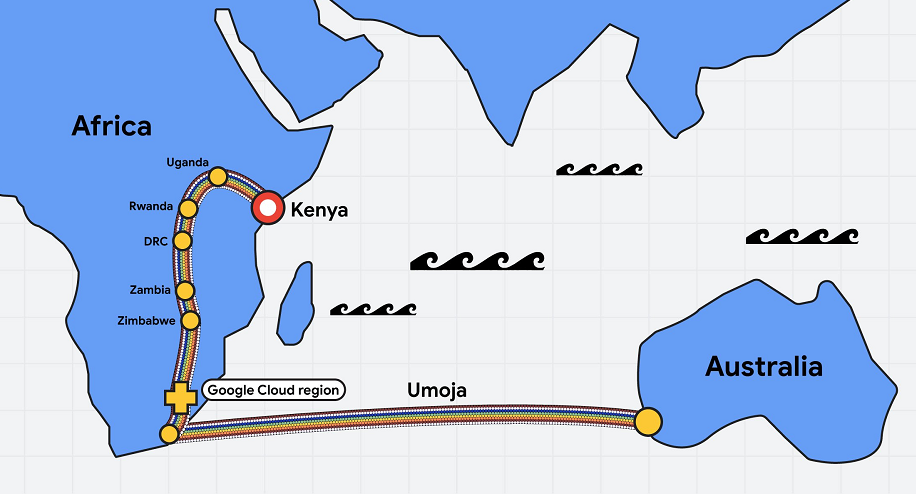Google LLC today announced plans to deploy a new subsea internet cable, called Umoja, that will provide connectivity between Africa and Australia.
The cable marks the latest in a series of underwater networking projects announced by the search giant. In April, Google detailed a $1 billion initiative to enhance subsea internet infrastructure in the Pacific. A few months earlier, it announced plans to build an undersea cable that will connect Portugal, Bermuda and the U.S.
“Umoja will enable African countries to more reliably connect with each other and the rest of the world,” Brian Quigley, vice president of global network infrastructure at Google LLC’s cloud unit, wrote in a blog post today. “Establishing a new route distinct from existing connectivity routes is critical to maintaining a resilient network for a region that has historically experienced high-impact outages.”
Google’s latest network link comprises two sections: one submerged and another built on land. TechCrunch reported today that construction of the latter segment has already been completed. Google built it in collaboration with a company called Liquid Intelligent Technologies.
The cable’s terrestrial section begins in Kenya near the country’s Indian Ocean coast. It stretches southwards through Uganda, Rwanda, Democratic Republic of the Congo, Zambia and Zimbabwe before connecting with the second, submarine segment in South Africa. From there, the cable continues underwater directly to Australia.
Google hasn’t shared technical information about the network link’s design. Subsea internet cables are typically implemented as a cluster of so-called optical fiber strands, tiny data-transmitting wires made of glass. They’re about as thin as a human hair, which allows as many as dozens to be placed in a single subsea cable.
The data-carrying strands are deployed inside a protective casing that comprises several layers. At least one layer is made of waterproof polymer to prevent leaks. The rest of the outer cover, in turn, includes several types of metal cladding designed to protect the networking equipment inside from damage.
At set intervals along the cable, engineers deploy devices known as optical repeaters. The data-carrying light beams that zip through an optical network link can lose some of the information they hold if they travel too large a distance. A subsea cable’s optical repeaters can intercept a light beam, create a fresh copy and send the copy in place of the original to avoid data loss.
Google has also developed several additional technologies for its undersea internet infrastructure. Last year, the company detailed a new way of designing the hair-thin optical fiber strands that transmit light inside a subsea cable.
A standard strand has two components: a glass core over which data travels and a cover likewise made of glass. The cover’s purpose is to prevent light from escaping the core. Google has helped developed a new design that makes it possible to equip an optical fiber strand with two data-transmitting cores instead of one, which boosts bandwidth.
The cable detailed today will be built as part of a Google initiative called Africa Connect. The initiative previously saw the company deploy a second subsea network link, Equiano, that connects South Africa with Portugal. It runs along the West Africa coast with branching points connecting to Togo, Nigeria, the island of St. Helena and Namibia.
Image: Google
Your vote of support is important to us and it helps us keep the content FREE.
One click below supports our mission to provide free, deep, and relevant content.
Join our community on YouTube
Join the community that includes more than 15,000 #CubeAlumni experts, including Amazon.com CEO Andy Jassy, Dell Technologies founder and CEO Michael Dell, Intel CEO Pat Gelsinger, and many more luminaries and experts.
THANK YOU

